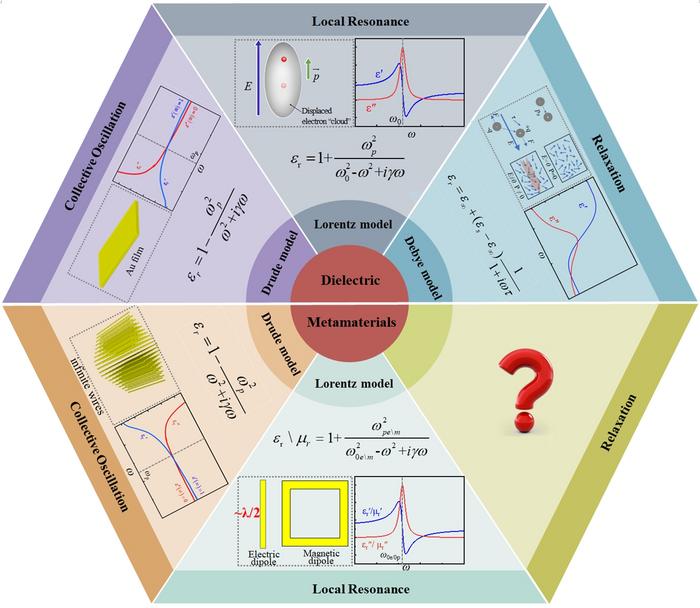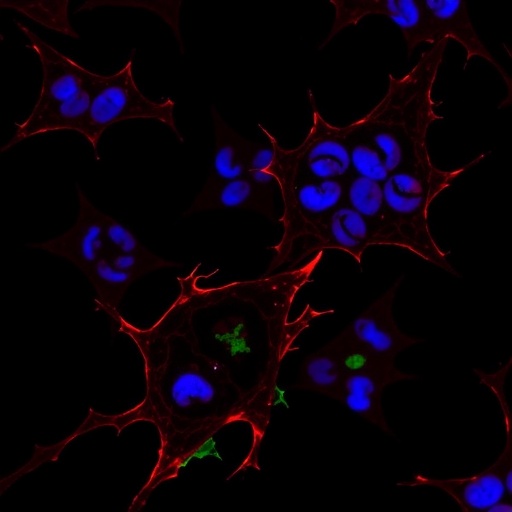In a groundbreaking advance at the intersection of electromagnetic materials and dielectric physics, researchers have unveiled a novel theoretical framework that integrates the often-overlooked Debye relaxation model into the study and design of metamaterials. This pioneering contribution completes a long-outstanding gap in the electromagnetic response classification of artificial structured materials, promising to revolutionize how broadband dispersion and ultra-wideband electromagnetic properties are harnessed in metamaterial systems.
The Debye relaxation model, widely recognized in dielectric physics, explains the frequency-dependent behavior arising from dipole moment realignment under an alternating electric field, manifesting as a gradual phase variation or relaxation process rather than the abrupt phase shifts predicted by Lorentz-type resonances. Despite its significance in describing a broad range of dielectric behaviors, the Debye mechanism has remained conspicuously absent in metamaterial modeling. This omission has limited the theoretical understanding and practical design of metamaterials, particularly in achieving broadband electromagnetic parameter control.
This research remedies this crucial lacuna by proposing a relaxation response model based on the co-design of electric and magnetic resonances within reflective metasurfaces. The team began by revisiting the fundamental theory of metamaterial resonances, recognizing that the typically observed magnetic and electric dipole oscillations—historically characterized as Lorentz resonances—can also exhibit relaxation phenomena consistent with Debye behavior. Through rigorous theoretical derivations, they demonstrated that the reflection phase response near a single resonance in a metasurface follows the mathematical form of first-order Debye relaxation, overturning previous conceptions that confined metamaterial resonances solely to Lorentz-type abrupt transitions.
Building upon this theoretical breakthrough, the team extended the concept to higher orders of relaxation. By engineering the resonance frequencies, intensities, and quality factors (Q-factors) of co-existing magnetic and electric resonances, they realized second-order and even more complex relaxation processes. These higher-order Debye relaxations are characterized by ultra-wideband gradual phase variations, enabling unprecedented control over the dispersive properties of metamaterials across a broad frequency spectrum.
To experimentally verify their model, the researchers designed a distinctive Quad-Elliptical-Arc (QEA) metallic meta-atom structure. This design exploits circularly polarized waves to intrinsically induce rotational electron movement along the elliptical arcs, effectively mimicking dipole orientation polarization found in dielectric physics. Simulations revealed that at approximately 8.0 GHz, magnetic resonance is evidenced by opposing directions of surface currents between the QEA structure and its ground plane. At around 12.0 GHz, aligned surface currents confirm the establishment of an electrical resonance. The synergy of these resonances culminates in a second-order Debye relaxation spanning a broad frequency range.
Moreover, by finely tuning the geometric parameters of the QEA meta-atom, the researchers achieved precise manipulation over the dual first-order relaxation responses, thus enabling tailored second-order relaxation phenomena. This geometrically driven tunability offers powerful flexibility for designing metamaterials with specified broadband dispersion characteristics.
The practical implications of this work extend beyond the theoretical domain. By realizing both chromatic (frequency-dependent) and achromatic (frequency-independent) reflective focusing metasurfaces based on the proposed Debye relaxation model, the team demonstrated functional devices operating effectively across the entire X-band frequency range (8.0–12.0 GHz), achieving a 40% relative bandwidth. Both numerical simulations and experimental measurements confirmed the robustness of broadband dispersion control enabled by the Debye relaxation framework.
This landmark achievement effectively bridges metamaterial research with classical dielectric physics, enriching the theoretical foundations underlying artificial electromagnetic materials. More importantly, it opens up vast new horizons for electromagnetic wave manipulation, especially in applications demanding ultra-wideband or broadband performance, such as advanced antenna systems, adaptive lenses, and integrated photonic devices.
The introduction of Debye relaxation to metamaterial theory not only completes the electromagnetic response framework but also provides a versatile analytical tool. It enables researchers and engineers to design meta-atoms and metasurfaces that harness relaxation dynamics to tailor electromagnetic parameters continuously over wide frequency ranges rather than relying solely on discrete resonance peaks.
Furthermore, this framework is highly adaptable, with potential for scalability and application across various spectral domains ranging from terahertz (THz) to optical frequencies. It also holds promise for interdisciplinary applications, notably in acoustic metamaterials where analogous relaxation processes govern mechanical wave propagation. Such cross-pollination between electromagnetic and acoustic metamaterials could lead to unified approaches for wave control in multiple physical domains.
The researchers’ innovative pursuit of incorporating Debye relaxation into metamaterials sets a new standard for the field, enhancing not only the fundamental understanding of electromagnetic material response but also paving the way for practical, high-performance devices with unprecedented bandwidth and dispersion manipulation capabilities.
This work highlights the indispensable role of combining electric and magnetic resonance designs for engineering artificial materials that transcend conventional limitations. By doing so, it signals a paradigm shift in artificial material design strategies, steering research toward holistic models that encompass all pivotal polarization mechanisms integral to electromagnetic response.
As metamaterials continue to evolve, the integration of Debye relaxation offers researchers a powerful and foundational approach to realize novel functionalities. These include tunable metamaterials, broadband cloaking devices, adaptive filters, and ultra-wideband communication components essential for next-generation wireless and optical technologies.
In summary, by bridging a theoretical divide and offering experimental validation, this study marks an important leap forward in artificial electromagnetic material science. It not only enriches the intellectual framework but also lays a robust foundation for the continued innovation and practical exploitation of metamaterial technologies across an ever-expanding spectrum of applications.
—
Subject of Research: Electromagnetic Polarization Mechanisms in Metamaterials; Introduction of Debye Relaxation Model into Metamaterial Theory.
Article Title: Bridging Metamaterials and Dielectric Physics: Introducing Debye Relaxation for Ultra-Broadband Electromagnetic Control.
News Publication Date: Not specified.
Image Credits: Xinmin Fu, Yajuan Han et al.
Keywords
Metamaterials, Dielectric Polarization, Debye Relaxation, Drude Model, Lorentz Model, Broadband Electromagnetics, Reflective Metasurfaces, Electromagnetic Dispersion Control, Meta-atom Design, Ultra-wideband Response, Electromagnetic Resonance, Quad-Elliptical-Arc (QEA), Electromagnetic Theory.
Tags: advances in metamaterial designbroadband dispersion in metamaterialsDebye relaxation mechanism in metamaterialsdielectric physics in metamaterialsdipole orientation relaxation in dielectricsDrude and Lorentz models comparisonelectromagnetic response of metamaterialsintegration of Debye model in metamaterialsmanipulation of electromagnetic wavesrevolutionizing artificial structured materialstheoretical framework for metamaterialsultra-wideband electromagnetic properties






